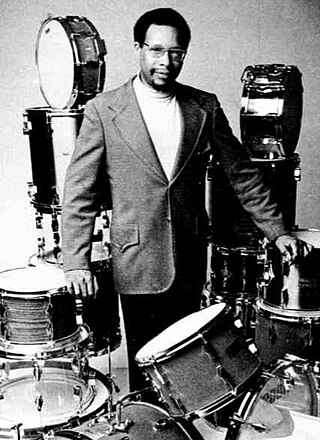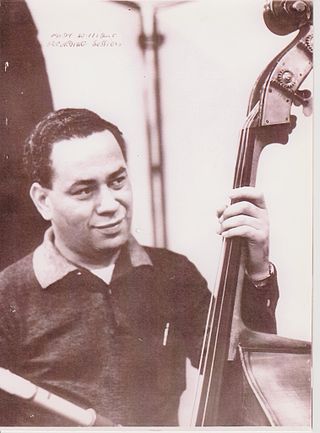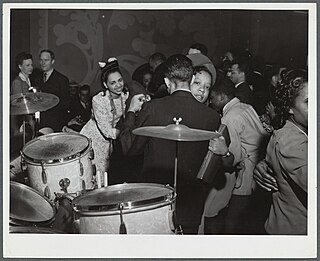Massachusetts is a U.S. state in New England. The music of Massachusetts has developed actively since it was first colonized by Britain. The city of Boston is an especially large part of the state's present music scene, which includes several genres of rock, as well as classical, folk, and hip hop music.

Gary Burton is an American jazz vibraphonist, composer, and educator. Burton developed a pianistic style of four-mallet technique as an alternative to the prevailing two-mallet technique. This approach caused him to be heralded as an innovator, and his sound and technique are widely imitated. He is also known for pioneering fusion jazz and popularizing the duet format in jazz, as well as being a major figure in music education from his 30 years teaching at the Berklee College of Music.

Alan Dawson was an American jazz drummer and percussion teacher based in Boston.
The culture of Boston, Massachusetts, shares many roots with greater New England, including a dialect of the Eastern New England accent popularly known as Boston English. The city has its own unique slang, which has existed for many years. Boston was, and is still, a major destination of Irish immigrants. Irish Americans are a major influence on Boston's politics and religious institutions and consequently on the rest of Massachusetts.
William Sebastian "Sabby" Lewis was an American jazz pianist, band leader, and arranger.

The Middle East is an entertainment complex consisting of five adjacent dining and live music venues in the Central Square neighborhood of Cambridge, Massachusetts. Its three dedicated concert spaces, Upstairs, Downstairs, and Sonia, sit alongside ZuZu and The Corner, two restaurants that also host live music. Having featured a huge variety of musicians since 1987, the establishment was described in 2007 as "the nexus of metro Boston's rock-club scene for local and touring bands" by the Boston Phoenix.

A jazz club is a venue where the primary entertainment is the performance of live jazz music, although some jazz clubs primarily focus on the study and/or promotion of jazz-music. Jazz clubs are usually a type of nightclub or bar, which is licensed to sell alcoholic beverages. Jazz clubs were in large rooms in the eras of Orchestral jazz and big band jazz, when bands were large and often augmented by a string section. Large rooms were also more common in the Swing era, because at that time, jazz was popular as a dance music, so the dancers needed space to move. With the transition to 1940s-era styles like Bebop and later styles such as soul jazz, small combos of musicians such as quartets and trios were mostly used, and the music became more of a music to listen to, rather than a form of dance music. As a result, smaller clubs with small stages became practical.

Café Society was a New York City nightclub open from 1938 to 1948 on Sheridan Square in Greenwich Village. It was managed by Barney Josephson.
John Anthony Pompeo, better known as Johnny Rae, was an American jazz drummer and vibraphonist.

A nightclub is a club that is open at night, usually for drinking, dancing and other entertainment. Nightclubs often have a bar and discothèque with a dance floor, laser lighting displays, and a stage for live music or a disc jockey (DJ) who mixes recorded music. Nightclubs tend to be smaller than live music venues like theatres and stadiums, with few or no seats for customers.

Lloyd Nelson Trotman, born in Boston, Massachusetts, United States, was an American jazz bassist, who backed numerous jazz, dixieland, R&B, and rock and roll artists in the 1940s, 1950s and 1960s. He resided in Huntington, Long Island, New York between 1962 and 2007, and prior to that in East Elmhurst, Queens, New York from 1945 to 1962. He worked primarily out of New York City. He provided the bass line on Ben E. King's "Stand by Me".

The Club DeLisa, also written Delisa or De Lisa, was an African-American nightclub and music venue in Chicago, Illinois. Located at 5521 South State Street, it was possibly the most prestigious venue in the city, together with the Regal Theater and the Rhumboogie Café, the 800–seat Club DeLisa played a key role in the city's association with jazz, blues, rhythm and blues and soul music. It closed in February 1958, but was re-opened as The Club in 1966.

The Berklee Performance Center is a 1,215-seat theatre located on Massachusetts Avenue in the Back Bay area of Boston, Massachusetts. It is the largest theatre space on the Berklee College of Music campus and is used primarily for college-affiliated activities. Presenters from outside the Berklee community also rent it for performances of all kinds. In 2009, the Berklee Performance Center hosted a total of 200 events.
Ray Santisi was an American jazz pianist, composer, arranger, recording artist and educator.
Joseph L. Walcott was the first African American to own a nightclub in New England.
The Paradise Club or Club Paradise was a nightclub and jazz club at 220 North Illinois Avenue in Atlantic City, New Jersey. It was one of two major black jazz clubs in Atlantic City during its heyday from the 1920s through 1950s, the other being Club Harlem. Entertaining a predominantly white clientele, it was known for its raucous floor shows featuring gyrating black dancers accompanied by high-energy jazz bands led by the likes of Count Basie, Jimmie Lunceford, and Lucky Millinder. In 1954 the Paradise Club merged with Club Harlem under joint ownership.
Roseland-State Ballroom was once a swing-era ballroom in Boston, MA. Jazz musicians including Duke Ellington, Count Basie, Jimmy Lunceford, Artie Shaw & Billie Holiday, Cab Calloway, and Charlie Barnet played in the 1930s and 1940s. Artie Shaw's band built their reputation playing Tuesdays and Saturday nights there in 1938.
Meghan Erin Stabile was an American jazz promoter, producer and organizer who was described by the New York Times in a 2013 profile as a "modern Impresario".
Mark Kelley is an American bass guitar player and member of the hip hop band The Roots, joining the band in 2011. Kelley plays with The Roots in the house band for The Tonight Show Starring Jimmy Fallon. He occasionally appears in games and sketches on The Tonight Show.









